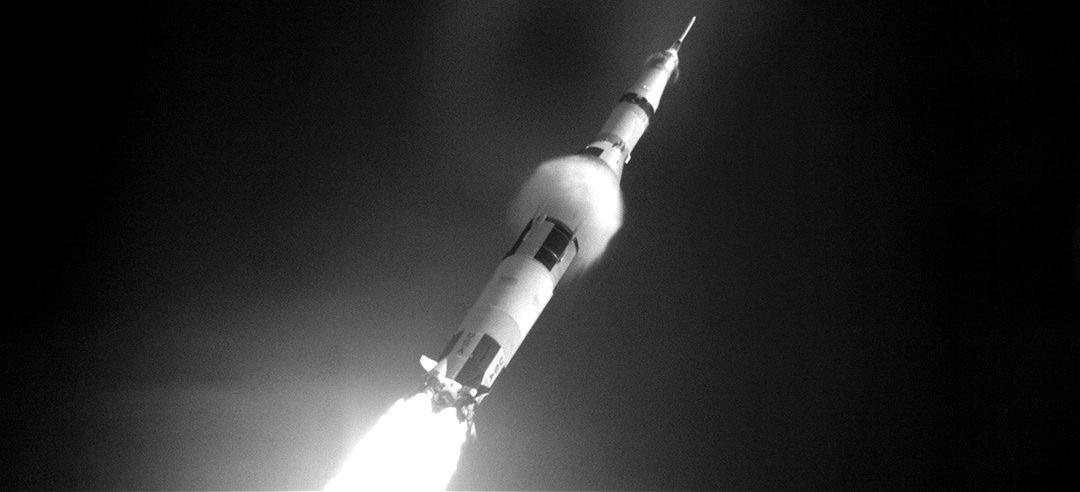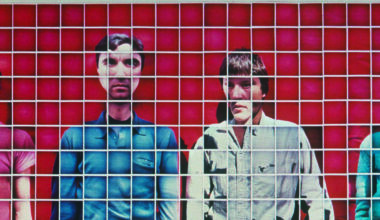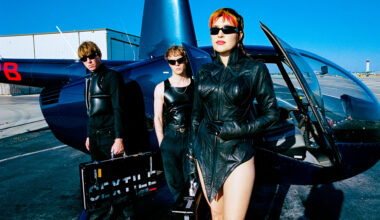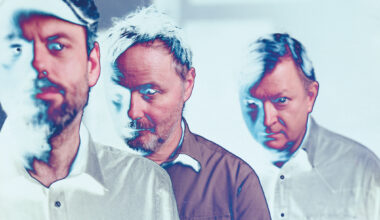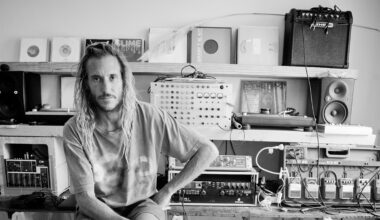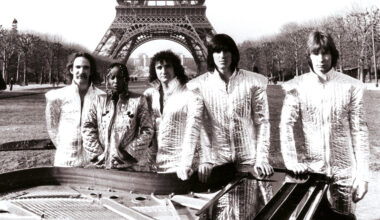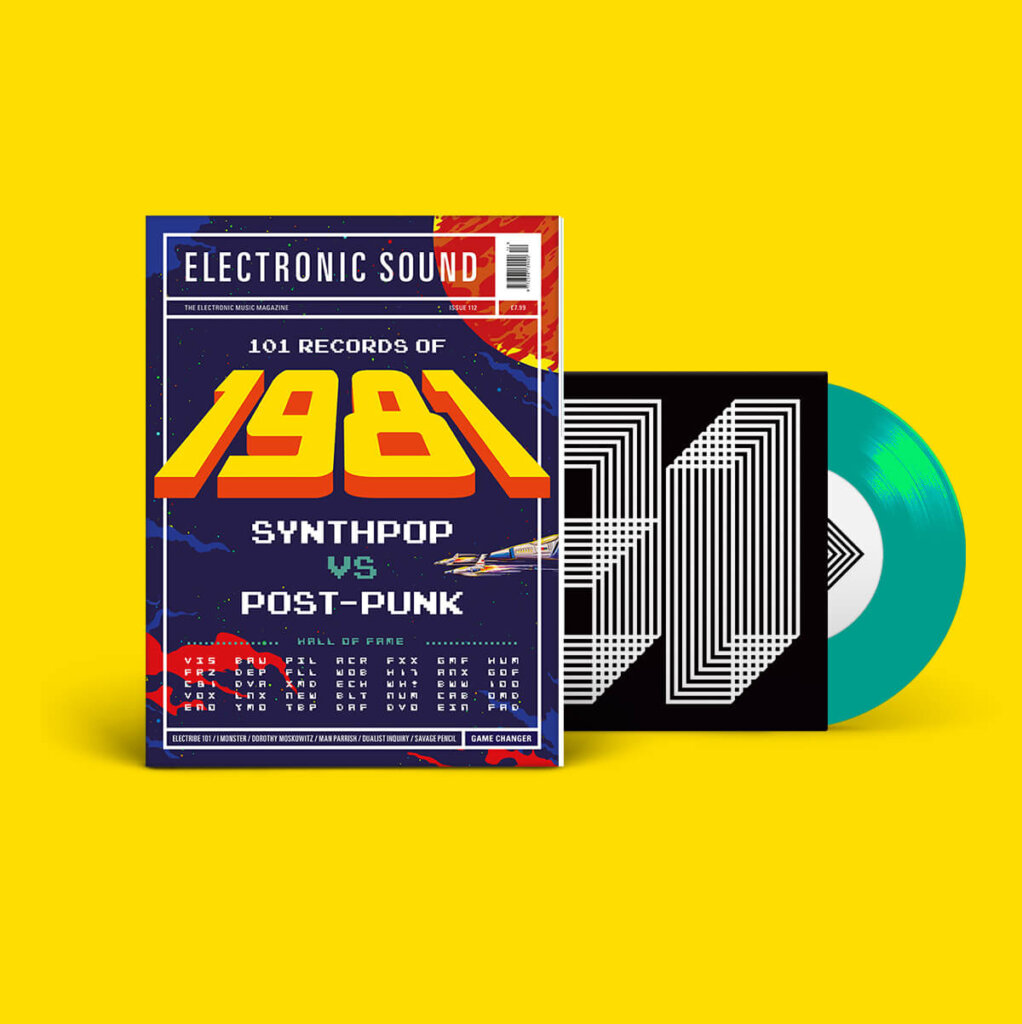Charting NASA’s extraordinary eight-day mission in July 1969 that saw the first Moon landing, the new ‘Apollo 11’ documentary is not just a visual feast, but an audio one too. Director Todd Douglas Miller, composer Matt Morton and sound designer Eric Milano explain how they brought this remarkable achievement to life
Who splashes out on a £28,000 instrument without laying hands on it first? Film composer Matt Morton can answer that question. Faced with scoring the new ‘Apollo 11’ documentary, he began to think hard about authenticity and how to propel the listener squarely back to the era of the space race.
“I went deep into the history of electronic music, back to the days of musique concrète,” says Morton. “At one point, I thought, ‘Yeah… I’ll do the soundtrack like Delia Derbyshire did the ‘Doctor Who’ theme’, and I was even looking into reel-to-reel machines.”
But then Morton twigged that at the time of the historic Moon launch, synthesisers had already begun to appear all over the pop culture spectrum. So instead of submitting to the dark art of splicing tape, he began instead to submerge himself in the vintage sounds of 1969.
“I listened to a lot of that early Moog music, some Buchla stuff too, and what was being done with the EMS VCS3. But the tone that I always came back to and really loved was the Moog sound.”

Morton was already in possession of a Minimoog, but eventually having fixated on the idea of only using period-correct sounds, he decided that what he really needed was the recently reissued Moog IIIc – the hand-built modular beast used by Stevie Wonder, Keith Emerson, and Wendy Carlos. Now all he needed to do was convince director Todd Douglas Miller.
“I told him ‘Dude, if we’re going to start telling the Apollo 11 story and we’ve got the blessing of NASA and the living astronauts, we’ve got to have the right sounds.’”
Miller, for his part, was not immediately sold on the idea.
“He was worried,” laughs Morton. “He took a lot of winning over, because we’ve all heard a lot more cheesy synth scores than we’ve heard well done ones. Many of them don’t age well. But then I started sending him short videos that I’d posted to Instagram, and other improvs that I thought might make it into the film. And people were really digging some of the vintage sounds that I was getting. The Moog puts a premium on sound quality and the ability to be manipulated musically. You can just hear those crunchy 901 oscillators coming through. It’s like a hive of bees.”
Miller and Morton have known each other since the two first met in primary school, and after the pair completed work on a short film on the Apollo 17 flight for CNN, Miller somewhat hesitantly signed himself and Morton up for the longer form piece on the Moon landing. The added pressure of the 50th anniversary, coupled with the weight of handling so many irreplaceable, historic materials, periodically gave Miller stage four collywobbles over the long production cycle.
“We haven’t really stopped in three years,” says Miller, prior to the film’s EU press campaign. “I don’t think we’ve really had a chance to step back and enjoy it quite yet.”
His team was awash with acres of unseen footage and some 11,000 hours of audio from mission control, and at one point, Miller was actually staring down a nine-day-long cut of the film. But once you’re sat in a dark theatre taking in pitch perfect moments like the final version of the lift-off sequence, you realise why ‘Apollo 11’ won the Special Jury Award for Editing at the 2019 Sundance film festival.
The sonic coils of synths and tortured strings ramp up as the clock ticks down to blast off, only to fall away and unveil just an electronic kick drum before the candle is lit. It’s one of those gripping cinema moments that will leave you breathless, though you know what’s about to go off.
“We knew Matt’s score was going to have to be somewhat dominant as a character in the film,” Miller says. “But for that particular scene right before the F-1 engines ignite, I always wanted to do something a little different, to clear the tension of what you were experiencing from the build up with the countdown, and to just get a few seconds of breathing room before the actual ignition happens.”
Miller really spared next to nothing in his drive for creating the most legitimate experience of what it felt like to watch as NASA fulfilled President Kennedy’s space mandate – get to the Moon before decade’s end. Having never heard the actual roar of those Saturn V rockets, Miller and his crew spent months perfecting their recreation of what that sounded like.
“We did a ton of testing down at the Air and Space Museum in Washington DC in their theatre. It’s a huge system, and one of the first IMAX screens. We would invite the surviving astronauts and their families in, along with our sound design team to try and dial some things in because getting that sound was crucial. If you talk to people who have experienced a Saturn V launch, the one thing they all say is that you felt it in your chest and in your whole body. So [sound designer] Eric Milano and I really worked a long time on getting that thump.”
“Todd was very adamant that he pleased the nerds for this film,” says Milano, who runs The Love Loft studio in New York City, and was charged with mixing Morton’s soundtrack, creating audio enhancements as they were needed for acres of silent footage. Milano was tasked with anything from simulating the sounds of vintage aircraft to recreating engine noise, or trickier things like imagining what outfitting the astronauts in their space suits sounded like in the prep area, even though the existing footage was completely silent. But as an example of the level of authenticity the ‘Apollo 11’ team were reaching for, Milano actually dug into old NASA design specs to recreate the famous 1202 program alarms that raised the pulses of all involved with the mission in the tense seconds before the Lunar Module actually touched down on the surface.
“There was no actual sound of the alarm, but someone found a manual that had all the specifications for everything that was in the Lunar Module. So we found that it was a sine wave that’s at 200 Hz, lasts for one second and then modulates up to 4000 Hz for two seconds, so using that I was able to create it with a signal generator plugin, and run it through some other things to make it sound dirty… presumably as it really sounded.”
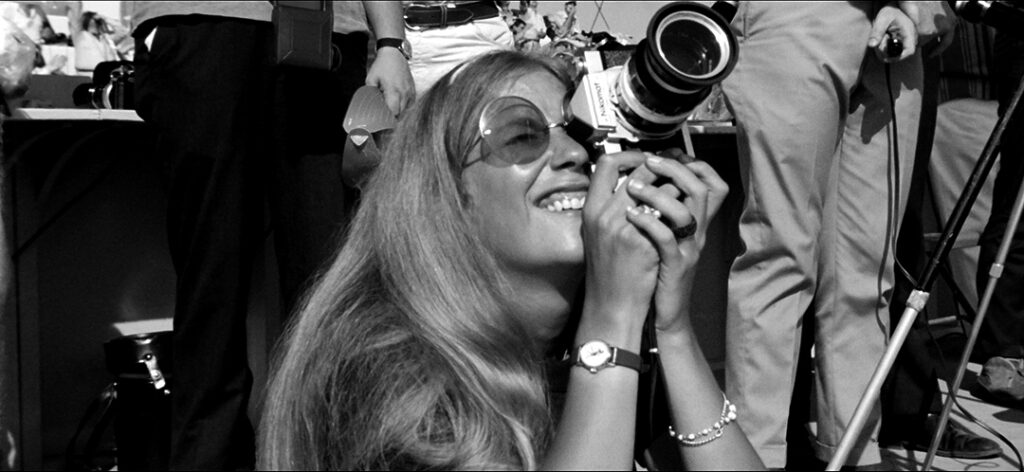
Milano also crafted reverbs to suggest different viewpoints of the launch site, but when it came to making sure the Saturn V’s departure was realistic, he came up with the idea of manually finessing the EQs on his mixing board to convey the motion of the rocket as it leaves the pad.
“And in experimenting with different ways of trying to make us feel like we were there, the thing that was really quite simple but worked incredibly well, was to sweep the treble region and go with the motion, as we see the booster being revealed to make it seem like it was exploding out of nothing.”
When the film’s director asked the Apollo 11 Command Module pilot Michael Collins if he thought they’d got it right, the 88 year-old astronaut told Miller, “How the hell should I know? I was sitting inside the damn thing.”
Real or reinvented, somehow the psychic roar of those Saturn V rockets managed to periodically drown out all that cultural upheaval of the 60s. And a half a century on, history paints the Moon landing as one of humanity’s singular unifying moments. Watching the meticulous way ‘Apollo 11’ recasts those eight days in July 1969, that’s easy to believe. Even for those who lived through those moments, Miller’s documentary is a visceral, riveting ride.
“It just really played to everyone’s strength,” says Miller, summing the project up. “Overall, from a story standpoint, we were doing some newer things that we really weren’t sure were going to work. But I feel like we were all just waiting for a project like this to come along. It really came at the right time. From our archive preservation team, to the sound design, to Matt’s music… everyone stepped up.”
For more, see apollo11movie.co.uk
